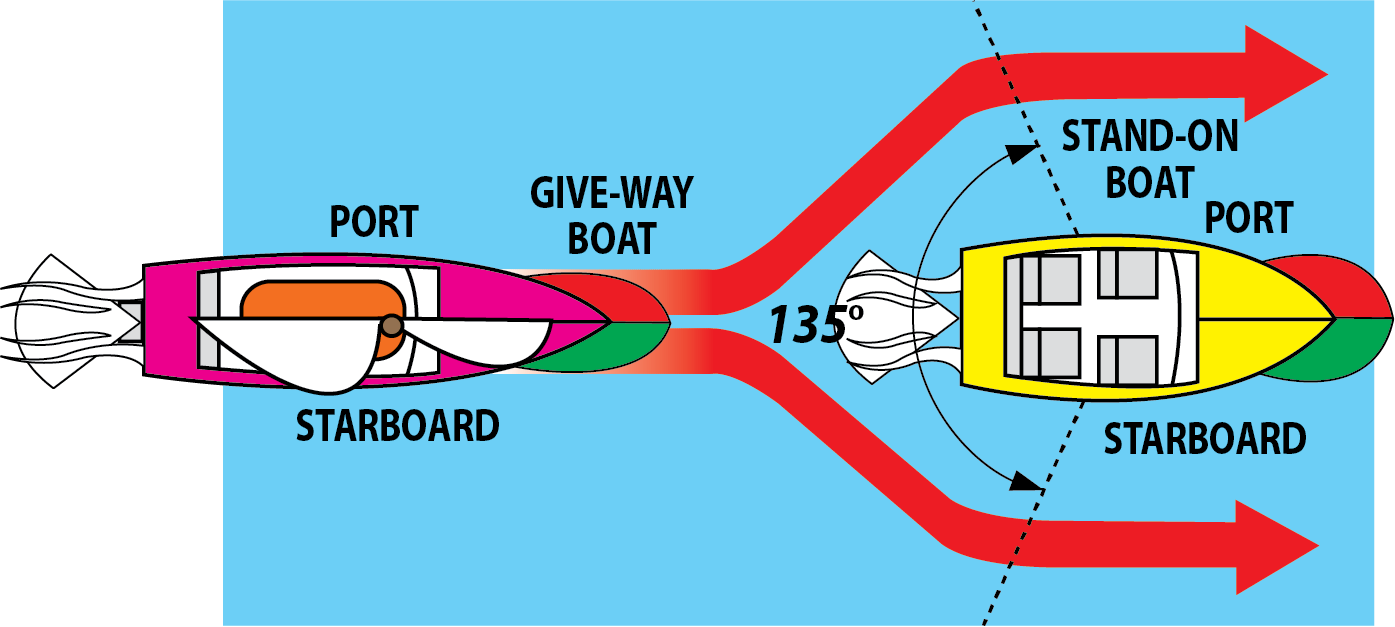NAVIGATION RULES
Navigation rules on the water are like rules of the road to prevent accidents. With
no traffic lines and few signs on the water, boat
operators must make smart choices.
Operators are responsible for:
- The safety of all passengers in the boat.
- The boat’s wake and any damage caused
by it.
- Maintaining a proper lookout and operating at a safe speed for the conditions.
- Using good seamanship, the foundation of the navigation rules.
KNOW THESE RULES
Proper Lookout
Maintain a proper lookout at all times when operating a boat. Avoid collisions by
scanning all around the boat for swimmers, other
boats, and obstructions. Listening for dangerous situations is also a part of maintaining proper
lookout. Ask passengers to assist.
Safe Speed
A safe speed depends on the weather, water conditions, time of day or
night, other boat traffic, and the type of boat. Safe speed allows the operator to be in
control and take corrective action to avoid a collision.
Stand-on and Give-way Rules to Avoid Collision
Know the rules of operating for stand-on or give-way for safely passing other boats. Under the rules, the stand-on boat is required to maintain its course and speed. The give-way boat is required to stop or slow down or, when overtaking, to pass the other boat in a safe manner. All operators are always required to avoid a collision in any situation. For more about passing and avoiding collisions refer to the Boating Handbook.
Power Boats Head-On (Meeting) Situations
When two boats meet head-on, both boats are
required to turn starboard (to the right) to avoid
the other. At night, head-on is indicated when both the red and the green running lights are visible at the same time. Find more about lights required on boats in the Boating Handbook.
Passing Situations
The boat being passed is the stand-on boat, and must maintain its course and speed while the
overtaking (give-way) boat passes. The overtaking boat is always the give-way boat, and it may
pass on either side.

Crossing Situation
All boats have a danger zone from dead ahead (12 o’clock) to 4 o’clock (112.5 degrees) starboard (the
right). In a crossing situation, the boat in the danger zone (ahead and to the right) is the stand-on boat.
The give-way boat must stop or slow down and let the stand-on boat continue. If the give-way boat
does not take the required action in this or any of the other situations, then the stand-on boat operator
must be prepared to take action to avoid a collision.
Other Important Rules of the Road
- A power-driven boat must give way to any
sailing boat under sail only (no auxiliary power propulsion).
- When a sailboat is overtaking a power driven boat, the power-driven boat is
the stand-on boat and maintains course
and speed while being overtaken.
- When a sailboat is approaching a boat
at anchor, the power-driven boat
remains anchored.
- In narrow channels, recreational boats
under 65 feet long must not hamper the
operation of large boats that cannot operate
outside the channel. Boats should operate
as near to the outer limit of the channel that
lies on its starboard (right) side as is safe
and practicable.
- Boats restricted in their ability to maneuver, such as tugs with barges, ferryboats, commercial fishing boats with nets or lines out, or boats at anchr, are stand-on boats.
- Boats not under command (usually because of mechanical problems and are unable to steer) or constrained by their draft are stand-on boats.
- On a river, a boat operating upriver (against the current) gives way to a boat operating downriver (with the current). A boat operating accross the current gives way to boats operating both upriver and downriver.